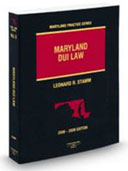Annie Dookhan, a former forensic chemist at a state forensic laboratory in Massachusetts, pleaded guilty to 27 counts of falsifying test results, misleading investigators, and tampering with evidence. She was sentenced this week to 3-5 years in prison. followed by 2 years of probation. In the course of her career she filed reports in approximately 40,000 criminal cases, which are now under review.
This is an extreme case, but it highlights the need for defense lawyers to carefully scrutinize state police laboratory results and methods to uncover mistakes resulting from incompetence, negligence, and fraud in criminal cases. Newpaper stories are replete with cases of laboratory mistakes that have resulted in erroneous convictions.
The amicus brief filed by the National Association of Criminal Defense Lawyers and the National College for DUI defense in Bullcoming v. New Mexico, co-written by Leonard R. Stamm said:
“Forensic evidence is not uniquely immune from the risk of manipulation.” Melendez-Diaz, 129 S. Ct. at 2536. The recent report by the National Research Council of the National Academies, Strengthening Forensic Sciences in the United States: a Path Forward (2009) (NAS Report), confirmed what defense lawyers have long known: because forensic analysis is a product of human discretion, it is vulnerable to incompetence, error and sometimes even fraud. See also Solomon Moore, Science Found Wanting in Nation’s Crime Labs, N.Y. Times, Feb. 5, 2009, available at http://www.nytimes.com/2009/02/05/us/05forensics.html (last visited Dec. 1, 2010). As the NAS Report revealed, forensic analyses “are often handled by poorly trained technicians who then exaggerate the accuracy of their methods in court.” Id. The NAS Report verifies that forensic science is anything but infallible, and is instead fraught by very human errors leading to problems such as sample contamination and inaccurate reports. Id.
The brief also listed some cases that made news in DUI cases:
A few recent incidents in DUI cases around the country show that blood analysis identical to the type used in Bullcoming is vulnerable to error or even fraud. For example, a recent investigation conducted by the Colorado Springs Police Department’s Metro Crime Lab discovered 206 false high blood alcohol tests in 2007 and 2009 alone, all attributable to a single chemist. John Ensslin, Final tally on flawed DUI: 206 errors, 9 tossed or reduced, Colo. Springs Gazette, Apr. 19, 2010, available at www.gazette.com/articles/
report-97354-police-discuss.html (last visited on Nov. 26, 2010). Nine DUI convictions were dismissed as a result, but it is impossible to know how many individuals were erroneously convicted. Id. The investigation revealed that a particular chemist had inserted low levels of n-propanol into many of her blood samples, resulting in a correspondingly higher calculation for the ethanol levels in the samples.
Anthony Lane, Unsolved Mysteries in the CSPD’s Crime Lab, Colo. Springs Indep., Apr. 19, 2010, available at http://www.csindy.com/colorado/unsolvedmysteries/content?oid=1699431 (last visited on Nov. 27, 2010). Yet “going back to 2002, supervisors consistently rated [the chemist] as ‘effective’ or ‘excellent,’ with no hint of problems.” Id. The improper addition of the internal standard could have been discovered through cross-examination. Other instances of ethanol testing errors have been reported in the press. For example, in Tooele County, Utah, a driver who had consumed no alcohol was reported to have a 0.19 blood alcohol level. Retesting produced 0.00 results. Subsequent review showed that the analyst had improperly transposed numbers, resulting in the erroneous reading. Nicole Gonzales & Marc Giauque, Homicide Charge Dropped Following Blood Test Mistake, Jan. 28, 2009, available at http://www.ksl.com/?nid=148&sid=5442828 (last visited on Nov. 24, 2010).
In Washington State, the supervisor of the State Police toxicology laboratory was found to have falsified certifications that she had tested solutions used to calibrate and test breath alcohol machines. Other individuals in the laboratory covered up the fraud. City of Seattle v. Holifield, No. 83277-3, 2010 WL 4008889 (Wash. Oct. 14, 2010); see also Tracy Johnson & Daniel Lathrop, Allegations May Cast Cloud Over DUI Cases: State lab manager quits after she is accused of signing false statements, Jul. 31, 2007, available at http://www.seattlepi.com/local/325706_dui31.html (last visited on Nov. 25, 2010). See also Jaxon Van Derbeken, Lab Employee to Take the 5th in Alesia and Tim Evans, Toxicology gaffes likely to affect cases, Dec. 6, 2010, available at http://wap.indystar.com/detail.jsp?key=774876&rc=th&full=1 (last visited on Dec. 6, 2010).
Forensic lab errors have resulted in imprisonment in many serious criminal cases. The Innocence Project lists 311 DNA exonerations since 1989, about half of which are attributable to errors in forensic science. See http://www.innocenceproject.org/Content/DNA_Exonerations_Nationwide.php.
If you are facing criminal or traffic charges in Maryland state or
federal court, call Leonard R. Stamm of Goldstein
& Stamm, P.A. at 301-345-0122 for a free consultation.
Leonard R. Stamm
Goldstein & Stamm, P.A.
6301 Ivy Lane, Suite 504
Greenbelt, MD 20770
301-345-0122
(fax) 301-441-4652
www.dwiattorneymaryland.com
https://www.marylandduilawyer-blog.com
marylandduilaw@gmail.com
Author: West’s Maryland DUI Law

 Maryland DUI Lawyer Blog
Maryland DUI Lawyer Blog

